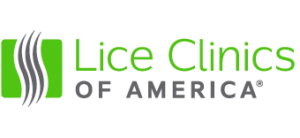The Real Health Risk of Head Lice
Nothing sets off a parent’s anxiety quite like when their children come home with head lice—the bugs are creepy. For centuries, head lice have been associated with (incorrectly, we might add) poor hygiene, which can embarrass parents and heighten their anxiety.
It’s been pointed out many times that head lice pose no real health threat to humans. Yes, the scalp itches, and yes, treating head lice can be frustrating, but as the U.S. Centers for Disease Control and Prevention says: “Head lice should not be considered as a medical or public health hazard. Head lice are not known to spread disease. Head lice can be an annoyance because their presence may cause itching and loss of sleep. Sometimes the itching can lead to excessive scratching that can sometimes increase the chance of a secondary skin infection.”
The most physical damage head lice can cause to a child is a secondary skin infection, and this is relatively rare. But that’s not the end of the story. There are health risks associated with head lice, but not from what you might think.
Is the Cure Worse than the Problem?
According to pest control experts at IdentifyUS, “The greatest harm associated with head lice results from the well-intentioned but misguided use of caustic or toxic substances to eliminate the lice.”
In other words, the retail products and home remedies for head lice can cause more health problems than the lice alone might cause. A 2017 study in Occupational and Environmental Medicine reports that “exposure to certain pyrethroids, at environmental levels, may negatively affect neurobehavioral development by 6 years of age.”
Pyrethroids are the chemicals used in over-the-counter lice products. A 2015 study in Environmental Health found that, “Pyrethroid pesticides cause abnormalities in the dopamine system and produce an ADHD phenotype in animal models, with effects accentuated in males versus females. However, data regarding behavioral effects of pyrethroid exposure in children is limited.”
Then there are home remedies—mayonnaise, petroleum jelly, even kerosene—recommended by well-meaning parents as fool-proof lice treatments. The idea is to smother the lice with some gooey substance that will suffocate them. Unfortunately, these “cures” usually involve wrapping a child’s head in plastic overnight to keep the substance in place. This practice has had tragic results.
A Different Approach
It doesn’t have to be this way. The FDA-cleared medical device AirAllé from Lice Clinics of America removes lice quickly and effectively without the risks of pesticides and home treatments. The AirAllé device uses microprocessor-controlled warm air, applied by trained technicians to dehydrate live lice and eggs in a matter of minutes. It has been clinically proven to kill lice and more than 99 percent of eggs.
Treatment using the AirAllé medical device is available exclusively at Lice Clinics of America treatment centers. With more than 150 clinics in the U.S. and another 100 in 20 other countries, Lice Clinics of America is the largest and fastest-growing network of lice treatment centers in the world. Collectively, there have been over 950,000 successful AirAllé treatments to date. Treatment using the AirAllé device takes about 60 to 90 minutes and is guaranteed to be effective.
Lice Clinics of America has successfully treated more than 950,000 cases of head lice. The company has more than 265 clinics in 20 countries, making it the world’s largest network of professional lice treatment centers. Lice Clinics of America – McKinney is located at 3120 Hudson Crossing, Suite A2, McKinney, TX 75070 and is open 7 days a week by appointment. Call 972-954-2334 or visit https://liceclinicsmckinney.com for more information or to schedule an appointment.










